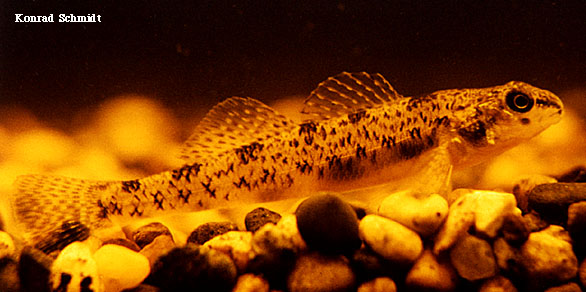
Reproduction

A sexually mature Johnny Darter is around the age of one (Grant, Colgan, 1983). The optimal water temperature for spawning is 12-24 degrees Celsius, from approximately the middle of May until the middle of June (Becker, 1983). When these temperatures are reached male Johnny Darters start to find their spawning sites, which are usually located in slow moving water where there is some sort of debris for them to make into nests. A rocky substrate tends to be a good home for spawning sites. This could include something as simple as the underside of rocks or even pop cans (Habitat) (Becker, 1983).
Male Johnny Darters are extremely protective over their nesting area. A female will try to enter the nest the first time and she will be readily chased out. Females tend to mate more with males who are the most aggressive in defense of their nest chasing them the farthest away. This is because the more aggressive male will have an increased fitness and will be better able to protect the eggs from predators. The second time time the female enters upside down hoping the mall will accept her. (Grant, Colgan, 1983)If accepted females could lay any where from 30-100 eggs for the male to fertilize. After fertilization the males will protect the nest until the eggs are hatched, while females continue down stream (Becker, 1983). While protecting the eggs from predators, males also keep the healthy eggs well supplied with oxygen and eats the eggs that are starting to grow fungus. Eggs will hatch approximately 6-10 days following fertilization depending on the water temperature (Baker et al 1991).